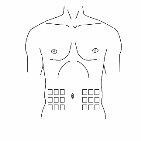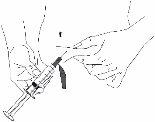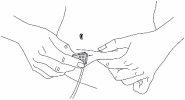
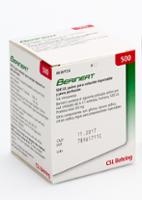
БЕРІНЕРТ 3000 МО ПОРОШОК І РОЗЧИННИК ДЛЯ ПРИГОТУВАННЯ РОЗЧИНУ ДЛЯ ПІДШКІРНИХ ІН'ЄКЦІЙ

Запитайте лікаря про рецепт на БЕРІНЕРТ 3000 МО ПОРОШОК І РОЗЧИННИК ДЛЯ ПРИГОТУВАННЯ РОЗЧИНУ ДЛЯ ПІДШКІРНИХ ІН'ЄКЦІЙ

Інструкція із застосування БЕРІНЕРТ 3000 МО ПОРОШОК І РОЗЧИННИК ДЛЯ ПРИГОТУВАННЯ РОЗЧИНУ ДЛЯ ПІДШКІРНИХ ІН'ЄКЦІЙ
Вступ
Опис: інформація для користувача
Berinert 3000 UI
Порошок і розчинник для ін'єкційної підшкірної суспензії
Гуманітарний інгібітор С1-естерази
Перш ніж почати використовувати цей лікарський засіб, уважно прочитайте весь опис, оскільки він містить важливу інформацію для вас.
- Збережіть цей опис, оскільки вам може знадобитися знову його прочитати.
- Якщо у вас виникли питання, проконсультуйтеся з вашим лікарем або фармацевтом.
- Цей лікарський засіб призначений лише вам і не слід давати його іншим людям, навіть якщо вони мають相同ні симптоми, оскільки це може зашкодити їм.
- Якщо ви відчуваєте побічні ефекти, проконсультуйтеся з вашим лікарем або фармацевтом, навіть якщо це побічні ефекти, які не вказані в цьому описі. Див. розділ 4.
Зміст опису:
- Що таке Берінерт і для чого він використовується
- Що вам потрібно знати перед початком використання Берінерту
- Як використовувати Берінерт
- Можливі побічні ефекти
- Збереження Берінерту
- Зміст упаковки та додаткова інформація
1. Що таке Берінерт і для чого він використовується
Що таке Берінерт?
Берінерт випускається у вигляді порошку та розчинника. Приготована суспензія повинна вводитися підшкірно.
Берінерт виготовляється з людської плазми (рідкої частини крові). Активний інгредієнт - гуманітарний інгібітор С1-естерази, отриманий з плазми.
Для чого використовується Берінерт?
Берінерт використовується для профілактики повторних нападів спадкового ангіоедему (СА) у підлітків та дорослих. Спадковий ангіоедем - це вроджена хвороба судинної системи. Це не алергічна хвороба. СА викликаний недостатньою, відсутньою або дефектною синтезом інгібітора С1-естерази, який є важливим білком. Хвороба характеризується наступними симптомами:
- Раптова припухлість рук і ніг,
- Раптова припухлість обличчя з відчуттям напруження,
- Припухлість повік, губ, можлива припухлість гортані (органу голосу) з труднощами дихання,
- Припухлість мови,
- Біль у животі.
Зазвичай, усі частини тіла можуть бути уражені.
2. Що вам потрібно знати перед початком використання Берінерту
Наступні розділи містять інформацію, яку ваш лікар повинен враховувати перед призначенням Берінерту.
Не використовуйте Берінерт:
- Якщо ви мали ризик життєво небезпечних реакцій гіперчутливості, включаючи анафілаксію, на інгібітор С1-естерази або будь-який інший компонент цього лікарського засобу (перелічені в розділі 6).
Повідомте вашого лікаря або фармацевта, якщо ви алергічні на будь-який лікарський засіб або харчовий продукт.
Попередження та обережність
Проконсультуйтеся з вашим лікарем або фармацевтом перед початком використання Берінерту,
- якщо відбуваються алергічні реакції або анафілактичні реакції (тяжка алергічна реакція, яка викликає важкі труднощі дихання або головокружіння). Введення Берінерту повинно бути негайно припинено (наприклад, припинено ін'єкцію).
- Якщо у вас є історія проблем з згортанням крові. У пацієнтів, які приймають Берінерт внутрішньовенно, з'явилися кров'яні згустки. Використання Берінерту у високих дозах при захворюваннях, інших ніж СА, може збільшити ризик кров'яних згустків. Однак у разі підшкірного введення Берінерту немає встановленої взаємозв'язку з кров'яними згустками при рекомендованій дозі. Проконсультуйтеся з вашим лікарем, якщо у вас є історія захворювання серця або судин, інфаркту, кров'яних згустків або густої крові, постійного катетера/пристрою доступу в одній з ваших вен або ви були імобілізовані протягом певного часу. ці ситуації можуть збільшити ризик утворення кров'яного згустку після використання Берінерту. Також повідомте вашому лікареві про лікарські засоби, які ви приймаєте, оскільки деякі лікарські засоби, такі як контрацептиви або певні андрогени, можуть збільшити ризик розвитку кров'яного згустку.
Ваш лікар буде ретельно зважувати користь лікування Берінертом порівняно з ризиком цих ускладнень.
Вірусна безпека
При введенні лікарських засобів, отриманих з людської крові або плазми, необхідно проводити певні заходи для уникнення передачі інфекцій пацієнтам. Такі заходи включають:
- Обережний відбір донорів крові та плазми для виключення тих, хто перебуває в групі ризику бути носіями інфекційних захворювань, та
- аналіз специфічних маркерів вірусів та інфекцій у окремих донорських матеріалах та у плазмових сумішах.
Виробники цих продуктів також включають стадії обробки крові або плазми для видалення/інактивації вірусів. Незважаючи на це, при введенні лікарських засобів, отриманих з людської крові або плазми, можливість передачі інфекційних агентів не можна повністю виключити. Це також стосується нових або невідомих вірусів чи інших типів інфекцій.
Застосовані заходи вважаються ефективними для вірусів з оболонкою, таких як вірус імунодефіциту людини (ВІЛ, вірус СНІДу), вірус гепатиту Б, вірус гепатиту С (запалення печінки) та для вірусів без оболонки, таких як вірус гепатиту А (запалення печінки) та парвовірус Б19.
Можливо, ваш лікар порекомендує вакцинацію проти гепатиту А та Б, якщо ви періодично/повторно приймаєте лікарські засоби, отримані з людської плазми.
Найсильніше рекомендується реєструвати кожне введення Берінерту, вказуючи дату введення, номер партії та об'єм ін'єкції.
Використання Берінерту з іншими лікарськими засобами
- Повідомте вашого лікаря або фармацевта, якщо ви приймаєте, нещодавно приймали або можете приймати будь-який інший лікарський засіб, включаючи лікарські засоби без рецепта.
- Берінерт не слід змішувати з іншими лікарськими засобами та розчинниками в одній шприці.
Вагітність та лактація
- Якщо ви вагітні або перебуваєте в період лактації, вважаєте, що можете бути вагітною або плануєте завагітніти, проконсультуйтеся з вашим лікарем або фармацевтом перед прийняттям цього лікарського засобу.
Відповідність до вимог та використання машин
Берінерт не впливає на вашу здатність керувати транспортними засобами та використовувати машини.
Берінерт містить натрій
Цей лікарський засіб містить 29 мг натрію (основного компонента кухонної солі) в кожній флаконі. Це відповідає 1,5% від максимальної добової норми споживання натрію, рекомендованої для дорослих.
3. Як використовувати Берінерт
Берінерт призначений для самостійного введення підшкірно. Ви або ваш опікун повинні бути навчені щодо способу введення Берінерту.
Дозування
Рекомендована доза Берінерту становить 60 ОД/кг маси тіла.
Педіатричне населення
Рекомендована доза така ж, як і для дорослих.
Якщо ви прийняли більше Берінерту, ніж потрібно
Не описано випадків передозування.
Перевірка та спосіб введення
Якщо ваш лікар вирішить, що ви можете лікувати себе вдома, він дасть вам детальні інструкції. Ви отримаєте щоденник, в якому буде записуватися кожна ін'єкція, зроблена вдома, який ви повинні мати при собі під час відвідування лікаря. Регулярно буде перевіряти, як ви або ваш опікун вводите ін'єкції, щоб забезпечити правильне введення протягом усього часу.
Загальні інструкції
- Порошок повинен бути розчинений та витягнутий з флакону під асептичними умовами. Використовуйте шприц, який постачається з продуктом.
- Приготована суспензія повинна бути прозорою та чистою або легкою опалесценцією. Після фільтрації або перекачування суспензії (див. нижче) необхідно візуально перевірити, щоб суспензія не містила частинок чи не мала забарвлення перед введенням.
- Не використовуйте суспензію, якщо вона явно мутна або містить частинки чи осади.
- Будь-яка кількість лікарського засобу, яка не була використана, або будь-який залишковий матеріал повинні бути видалені згідно з місцевими правилами та інструкціями вашого лікаря.
Перевірка
Перед відкриттям будь-якого флакону дайте Берінерту та розчиннику досягти кімнатної температури. Для цього можна залишити флакони при кімнатній температурі протягом приблизно однієї години або тримати їх у закритих руках протягом декількох хвилин. НЕ піддавайте флакони прямому теплу. Флакони не повинні бути нагріті до температури вище температури тіла (37 °C).
Обережно зніміть захисні ковпачки з флакону розчинника та флакону з порошком. Очистіть відкриті гумовими пробками обидвох флаконів ватним тампоном, вмоченим в спирт, та дайте їм висохнути. Тепер ви можете перевести розчинник у флакон з порошком за допомогою системи введення (Mix2Vial). Будь ласка, слідуйте наступним інструкціям:
|
|
|
|
|
|
|
|
|
|
|
|
|
|
Перекачування та введення
8 |
|
9 |
|
Введення
Самостійне введення (підшкірне введення)
Ваш лікар навчить вас, як безпечно вводити Берінерт. Як тільки ви дізнаєтеся, як самостійно вводити лікарський засіб, слідуйте інструкціям, які надані нижче.
Таблиця 2. Інструкції для самостійного введення Берінерту
Крок 1: Прикріпіть аксесуари Візьміть шприц Берінерт, наступні одноразові аксесуари та інші предмети (ігли або інші упаковки, щоденник лікування або реєстр):
| |
Крок 2: Очистіть поверхню
| |
Крок 3: Вимийте руки
| |
Крок 4: Підготовіть місце ін'єкції
|
Фігура 1
Фігура 2 |
Крок 5: Ін'єкція в черевній області За вказівкою вашого медичного працівника:
Ін'єкція гіподермічною голкою:
Ін'єкція набором для підшкірної інфузії:
|
Фігура 3 |
Фігура 4 | |
Крок 6: Очистіть
| |
Крок 7: Зареєструйте лікування
|
4. Можливі побічні ефекти
Як і всі лікарські засоби, цей лікарський засіб може викликати побічні ефекти, хоча не всі люди їх відчувають.
Негайно зверніться до вашого лікаря
- якщо виникає будь-який побічний ефект або
- якщо ви виявите будь-який побічний ефект, не вказаний в цьому описі.
Побічні ефекти Берінерту рідкісні.
Наступні побічні ефекти спостерігалися дуже часто (можуть впливати на понад 1 з 10 осіб):
- Реакції на місці ін'єкції (синяки, відчуття холоду, нагноєння, еритема, гематома, кровотеча, затвердіння, набряк, біль, свербіж, висип, рубець, припухлість, кропив'янка, тепло).
- Назофарингіт (закладена ніс, чхання, слізоточивість очей).
Наступні побічні ефекти спостерігалися часто (можуть впливати до 1 з 10 осіб):
- Реакції гіперчутливості або алергічні реакції (наприклад, гіперчутливість, свербіж, висип, кропив'янка)
- Головокружіння
Звіт про побічні ефекти
Якщо ви відчуваєте будь-який побічний ефект, зверніться до вашого лікаря або фармацевта, навіть якщо це побічні ефекти, які не вказані в цьому описі. Ви також можете повідомити про них безпосередньо через Sistema Español de Farmacovigilancia de Medicamentos de Uso Humano: www.notificaRAM.es. Надсилаючи повідомлення про побічні ефекти, ви можете допомогти надати більше інформації про безпеку цього лікарського засобу.
5. Збереження Берінерту
- Тримайте цей лікарський засіб поза зоною досяжності дітей.
- Не використовуйте цей лікарський засіб після закінчення терміну придатності, вказаного на етикетці та упаковці після EXP.
- Не зберігайте при температурі вище 30 °C.
- Не заморожуйте.
- Зберігайте флакон у зовнішній упаковці, щоб захистити його від світла.
- Берінерт не містить консервантів, тому приготовану суспензію краще використовувати негайно.
- Якщо приготована суспензія не вводиться негайно, її слід використовувати протягом 8 годин та зберігати лише у флаконі.
6. Зміст упаковки та додаткова інформація
Склад Берінерту
Активна речовина:
Інгібітор гуманої C1-естерази (3 000 ОД/флакон; після відновлення 5,6 мл води для ін'єкційних препаратів 500 ОД/мл).
Для більшої інформації див. розділ “Ця інформація призначена лише для фахівців галузі охорони здоров’я”.
Інші складові:
Гліцин, хлорид натрію, цитрат натрію.
Розчинник:вода для ін'єкційних препаратів.
Зовнішній вигляд продукту та вміст упаковки
Берінерт представлений у вигляді білого порошку та постачається з водою для ін'єкційних препаратів як розчинником.
Приготовлена розчин повинна бути прозорою та ясною або легенько опалесцентною.
Упаковка
Одна упаковка містить:
1 флакон з порошком
1 флакон з 5,6 мл води для ін'єкційних препаратів
1 переливний інструмент з фільтром 20/20
Середство для введення (внутрішня коробка):
1 одноразова ін'єкційна шприц об'ємом 10 мл
1 підшкірна голка
1 набір для підшкірного введення (бабочка)
2 ватні тампони з алкоголем
1 пластир
Мультиупаковка 5 х 3 000 ОД, включаючи коробку з 5 наборами для введення.
Мультиупаковка 20 х 3 000 ОД, включаючи 4 коробки з 5 наборами для введення.
Можливо, що будуть реалізовані лише деякі розміри упаковки.
Власник дозволу на маркетинг та відповідальна особа за виробництво
CSL Behring GmbH
Emil-von-Behring-Strasse 76
35041 Марбург
Німеччина
Для отримання більшої інформації щодо цього лікарського засобу зверніться до місцевого представника власника дозволу на маркетинг:
CSL Behring S.A.
c/ Tarragona 157, 18-й поверх
08014 Барселона
Іспанія
Цей лікарський засіб дозволений в державах-членах Європейського економічного просторута у Великій Британії (Північна Ірландія)під наступними назвами:
Berinert 3000 ОД Порошок та розчинник для приготування ін'єкційної розчину Австрія
Berinert 3000 МО, порошок та розчинник для приготування ін'єкційної розчину Бельгія, Нідерланди
Berinert 3000 Кіпр, Німеччина, Греція, Польща, Португалія
???????? 3000, ???? ? ???????????
?? ??????????? ???????
C1- ????????? ?????????, ??????? Болгарія
Berinert 3000 МО Чехія, Словаччина
Berinert 3000 МО порошок та розчинник для приготування ін'єкційної розчину Хорватія
Berinert Данія, Італія
Berinert SC Естонія
Berinert 3000 МО, порошок та розчинник для приготування ін'єкційної розчину Фінляндія
Berinert 3000 ОД, порошок та розчинник для приготування ін'єкційної розчину Франція, Люксембург
Berinert 3000 МО порошок та розчинник для приготування ін'єкційної розчину Угорщина
Berinert 3000 а.е. порошок та розчинник для приготування ін'єкційної розчину Ісландія
Гуманний інгібітор C1-естерази CSL Behring 3000 ТУ порошок та розчинник для приготування ін'єкційної розчину Литва
Berinert 3000 МО порошок та розчинник для приготування ін'єкційної розчину Норвегія
Berinert 3000 3000 ОД, порошок та розчинник для приготування ін'єкційної розчину Румунія
Berinert 3000 МО порошок та розчинник для приготування ін'єкційної розчину Словенія
Berinert 3000 ОД порошок та розчинник для приготування ін'єкційної розчину підшкірного введення Іспанія
Berinert 3000 МО, порошок та розчинник для приготування ін'єкційної розчину Швеція
Berinert 3000 МО порошок та розчинник для приготування ін'єкційної розчину Велика Британія, Мальта, Ірландія
Дата останнього перегляду цього листка:Жовтень 2021
Детальна та оновлена інформація про цей лікарський засіб доступна на сайті Агентства з лікарських засобів та медичних продуктів Іспанії (AEMPS) http://www.aemps.gob.es
Ця інформація призначена лише для фахівців галузі охорони здоров’я
ЯКІСНА ТА КІЛЬКІСНА КОМПОЗИЦІЯ
Потужність інгібітора гуманої C1-естерази виражається в Міжнародних одиницях (ОД), що пов'язано з поточним стандартом ВООЗ для продуктів інгібіторів C1-естерази.
- Країна реєстрації
- Діючі речовини
- Потрібен рецептТак
- Виробник
- Інформація є довідковою і не є медичною порадою. Перед прийомом будь-яких препаратів обов'язково проконсультуйтеся з лікарем. Oladoctor не несе відповідальності за медичні рішення, прийняті на основі цього контенту.
- Альтернативи до БЕРІНЕРТ 3000 МО ПОРОШОК І РОЗЧИННИК ДЛЯ ПРИГОТУВАННЯ РОЗЧИНУ ДЛЯ ПІДШКІРНИХ ІН'ЄКЦІЙФорма випуску: РОЗЧИН ДЛЯ ІН'ЄКЦІЙ, 1500 МОДіючі речовини: c1-inhibitor, plasma derivedВиробник: Csl Behring GmbhПотрібен рецептФорма випуску: РОЗЧИН ДЛЯ ІН'ЄКЦІЙ, 2000 МОДіючі речовини: c1-inhibitor, plasma derivedВиробник: Csl Behring GmbhПотрібен рецептФорма випуску: РОЗЧИН ДЛЯ ІН'ЄКЦІЙ, 500 ОДДіючі речовини: c1-inhibitor, plasma derivedВиробник: Csl Behring GmbhПотрібен рецепт
Аналоги БЕРІНЕРТ 3000 МО ПОРОШОК І РОЗЧИННИК ДЛЯ ПРИГОТУВАННЯ РОЗЧИНУ ДЛЯ ПІДШКІРНИХ ІН'ЄКЦІЙ в інших країнах
Найкращі аналоги з тією самою діючою речовиною та терапевтичним ефектом.
Аналог БЕРІНЕРТ 3000 МО ПОРОШОК І РОЗЧИННИК ДЛЯ ПРИГОТУВАННЯ РОЗЧИНУ ДЛЯ ПІДШКІРНИХ ІН'ЄКЦІЙ у Польща
Аналог БЕРІНЕРТ 3000 МО ПОРОШОК І РОЗЧИННИК ДЛЯ ПРИГОТУВАННЯ РОЗЧИНУ ДЛЯ ПІДШКІРНИХ ІН'ЄКЦІЙ у Україна
Лікарі онлайн щодо БЕРІНЕРТ 3000 МО ПОРОШОК І РОЗЧИННИК ДЛЯ ПРИГОТУВАННЯ РОЗЧИНУ ДЛЯ ПІДШКІРНИХ ІН'ЄКЦІЙ
Консультація щодо дозування, побічних ефектів, взаємодій, протипоказань та поновлення рецепта на БЕРІНЕРТ 3000 МО ПОРОШОК І РОЗЧИННИК ДЛЯ ПРИГОТУВАННЯ РОЗЧИНУ ДЛЯ ПІДШКІРНИХ ІН'ЄКЦІЙ – за рішенням лікаря та згідно з місцевими правилами.




 1
1 2
2 3
3 4
4 5
5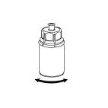 6
6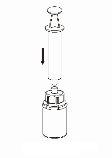 7
7